Published by: BhumiRaj Timalsina
Published date: 02 Feb 2022

Different types of organism are found around us. They are classified as animals and plants on the basis of their characteristics. Man, cow, dog, pigeon, fish etc. are the examples of animal kingdom. Likewise grasses, mushroom, fern, orange, banyan tree, peepal etc. fall in plant kingdom. The physical structure, features and characteristics of organisms differ according to their habitat. For example: The animals and plants which are found in Himalayan region differ in physical structures with the animals and plants found in Terai region. This unit will discuss about these subject matters.
Differences between Plant and Anima
l Plant and animal are living being. There are some similarities between both living and nonliving beings. For example: In respiration, both of them take in oxygen and throw out carbon dioxide. Both have life processes like reproduction, growth etc. . However, they have many differences; some of them are shown in the following table:
|
Plants |
Animals |
|
Generally they do not show movement. |
They show physical movement. |
|
They prepare their own food by photosynthesis process. |
They get their food from plants or from other animals. |
|
They do not show high level of sensitivity like animals. |
They have high sensitivity in comparison with plants. |
|
Their growth is continuous or infinite for whole life. |
Their growth is for limited time. |
|
Reproduction takes place from seed, leaf, stem, root etc |
Reproduction takes place by giving birth of babies, laying eggs, fragmentation of body etc. |
Thousands of animals and plants are found on the earth. They need environmentally better place for shelter, growth, food, protection etc. Nature has provided them ability to adjust their bodies for survival and growth, according to geographical diversities or climatic condition of himalaya, mountain, terai or cold, hot, land, water, air, snow etc. We study about plants and animals which survive in water, land, air and snow in this section.
All the animals of the earth can be classified according to their habitat or their external features as follow:
Aquatic animals commonly live in water. Their bodies are streamlined. These animals, in maximum, breathe in through gills. Body is covered by scales. Likewise, they can swim with the help of fins, their head and thorax are distinct, egg laying, and absence of lungs are their common features. For example: Katla fish, prawn, eel, sea horse, etc. Similarly, dolphin, crocodile etc. live in water but they have lungs.

Bodies of the animals that are found in cold places are covered with hair whereas animals that are found in warm places have less hair. Land animals’ legs are made of strong muscles and bones. Size of legs and paws differ from one animal to the other. Hoof of some animals are divided into two parts whereas some have only one. Animals that live in very hot places like desert have a pouch where they can store water for a long time. For example: Yak, polar bear, horse, tiger, elephant, camel etc.
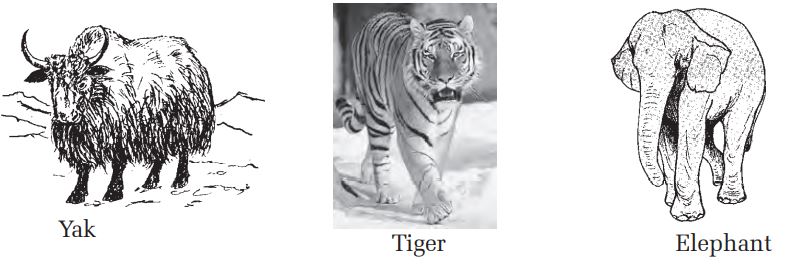
Some animals live on trees, walls of houses and on hills. Animals like lizard that climb walls have adhesive pad on their legs. Chest of these animals have strong muscles. For example: Lizard, monkey, squirrel.

Some animals live in holes. Among them, some make their own holes whereas some live in holes that other animals have made. Rabbit and mouse make their own holes to live. Their toes’ nails and mouth are strong. Animals like snake and python live in holes that other animals have made.

Bodies of aerial animals like birds are made of light bones. Their bodies have feathers and wings. They have air pouches inside their bodies. They eat with the help of their beaks and fly with the help of their wings. For example: crow, lophophorus, pheasant, peacock, pigeon etc.

Similar to animals, plants are also found in different places – some in water, some in moist places and some in dry places. According to the environmental condition of air and water, they grow in different places. Shapes and types of plants differ according to the places where they grow. Plants that are found around us are classified below in accordance with the places they grow.
Plants that are found in water are also called hydrophytes. These plants are found in pond, river, lake and muddy areas. They may be of floating or immersed type. They absorb water soluble salts and gases through their root and other parts for breathing as well as for photosynthesis. The above mentioned characters are common in the hydrophyte. Also, these plants have weak roots, and soft and floppy stem. The outer parts of these plants are covered with waxy substance. For example: Algae, hydrilla, lotus, water hyacinth etc.

According to the environmental condition of air and water, terrestrial plants differ from Mountainous region to Terai. These plants grow in dry, moist and warm places and also in humid places. The shoots of these plants are hard and they are green in color. The classification of terrestrial plants is presented below in accordance with the areas of land where they grow:
Plants that are found in hot and moist climates are tall and have hard shoots and generally more leaves are at top. For example: Mango, rubber, coconut etc.
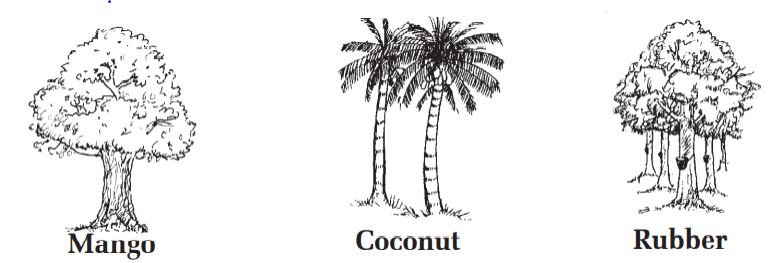
These plants have the ability to survive even in hot climate. They are also known as Xerophytes. These plants have thick and small leaves, round stem and their roots go deep inside the land. It makes them able to collect water and salt from deep inside the land. For example: Opuntia, aloe vera etc.
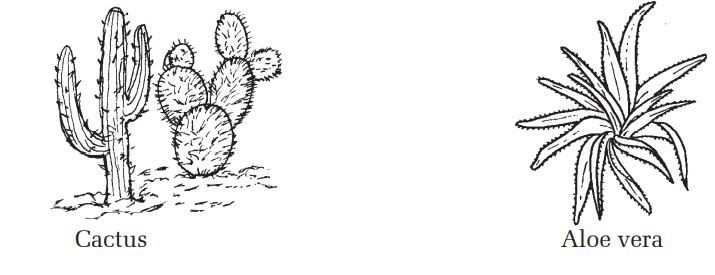
Plants that need less sunlight and more moisture are usually nonflowering plants that don’t produce flowers. Some of them grow in stem of other trees, dry shoot of trees and between rocks. For example: Mushroom, Fern, Moss etc.
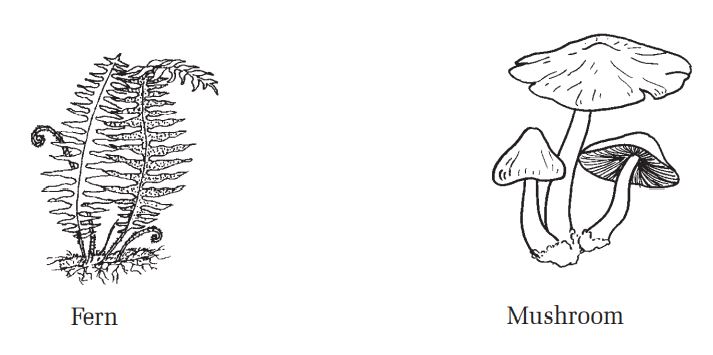
Leaves of the plants that are found in Mountainous region or places where they have snowfall are long and pointed. Because their cone like shape, these plants are also known as coniferous plants. For example: Pine, dhupi (Thuja), cycas etc.
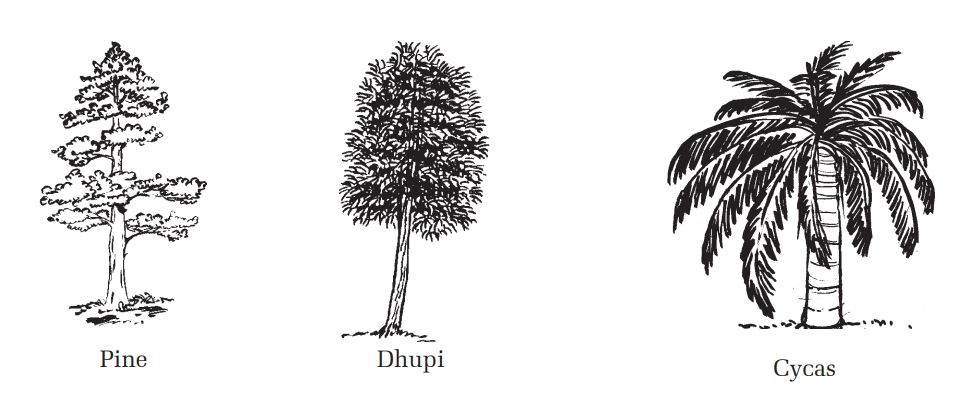
Plants can be divided into following groups based on their life span:
These plants live only for one season. They sprout after seed germination, grow and produce flowers and seeds. Then these plants die after this process. For example: Mustard, paddy, wheat, pea, bean etc.
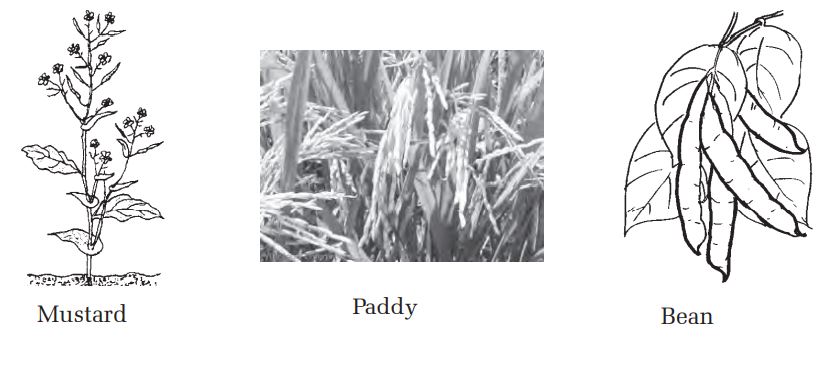
Life span of these plants is generally two seasons. They grow in first season and then produce flowers and seeds in the second season. For example: Carrot, turnip, radish, cabbage etc.
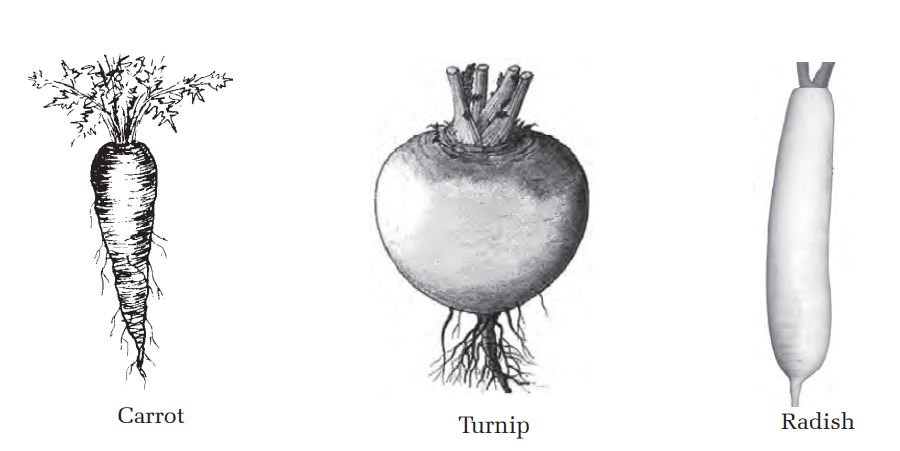
Plants that can live for two or more than two years are called perennial plants. These plants grow more and bloom flowers and seeds during rainy summer season. For example: Mango, litchi, apple, orange etc.
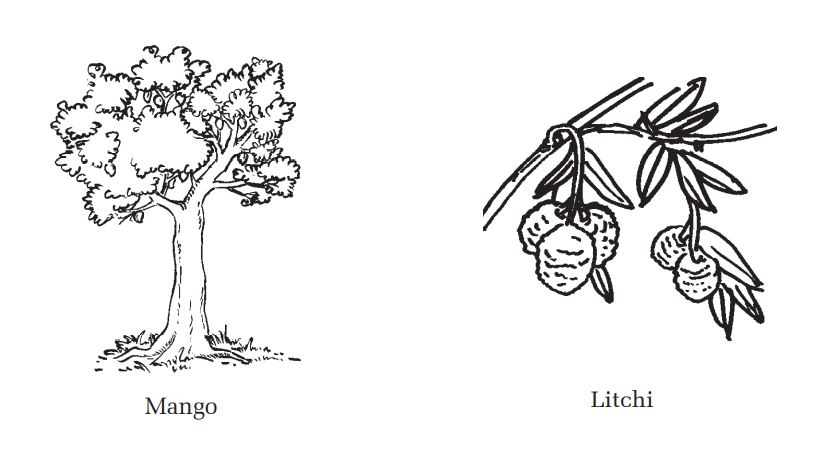
Among the plants found in nature, some produce flowers and some don’t. Plants that produce flowers have seeds. Shape and size of the seeds vary according to the plants. Some plants have only one cotyledon in their seeds and they are called monocotyledonous plants. Some plants have two cotyledons in their seeds. These plants are called dicotyledonous plants. Depending on the number of cotyledons roots, stem and leaves of the plants vary. Few examples of roots, stem and leaves of monocotyledonous and dicotyledonous plants are given in the table below:

We have seen different types of animals around our homes and through newspaper, TV, videos etc. Among these animals, we have gained some knowledge about the invertebrates. For protection, invertebrates have strong outer covers in their bodies. Animals like scorpion, earthworm, snail and crab, etc. and those animals which cannot be seen by our naked eyes fall under the category of invertebrates. We will now categorize invertebrates based on their physical features and will discuss their characteristics. The invertebrates have been divided into nine phyla. They are as follow:
a. Body is made of only one cell.
b. Generally found in water.
c. For movement they have pseudopodia, flogella and cilia like structures.
d. Reproduction takes place through cell division.
Examples: Amoeba, Paramecium etc.
a. Body is made up of many cells.
b. Mostly they are aquatic and remain attached to substratum.
c. Body consists of many pores.
d. Though body is diploblastic, there are no organs developed for respiration, excretion, and nervous system.
Examples: Sponge, Sycon.
a. Body consists of hollow cavity (coelenteron).
b. Body is made up of two layers (diploblastic).
c. Mouth is surrounded by small thread like structure called tentacles that helps in locomotion and feeding.
Examples: Hydra, Coral, Jellyfish.
a. Body is flat.
b. Some are small and some are long.
c. Body is made up of soft layer of cells.
d. Mouth consists of sucker but there is no anus.
e. Mostly parasites fall in this phylum.
Examples: Tapeworm, Liver fluke
a. Mouth, anus and sucker are well developed.
b. Some are found in the form of parasites.
c. Their body tapers at both the ends. Male and female can be distinguished.
Examples: Hook worm, Round worm etc.
a. Body is round and segmented.
b. Usually found in damp places.
c. They are hermaphrodites.
Examples: Earthworm, leech etc.
a. Body is divided into head, thorax and abdomen.
b. They have joint appendages.
c. They are found in air, water and land.
d. Males and females are different. They have internal fertilization.
e. Usually life cycle is completed in four stages (egg, larva, pupa and adult).
Examples: Mosquito, butterfly, Ant etc.
a. Found in both land and water.
b. Legs are made of strong muscles.
c. They have soft bodies, which are usually covered with hard shell.
d. They have tentacles on their head.
e. They are unisexual.
Examples: Clam, Snail, Octopus etc.
a. Body is covered with hard spines made of calcium carbonate.
b. Usually found in sea.
c. Male and female are separate.
Examples: Starfish, sea urchin, sea cucumber etc